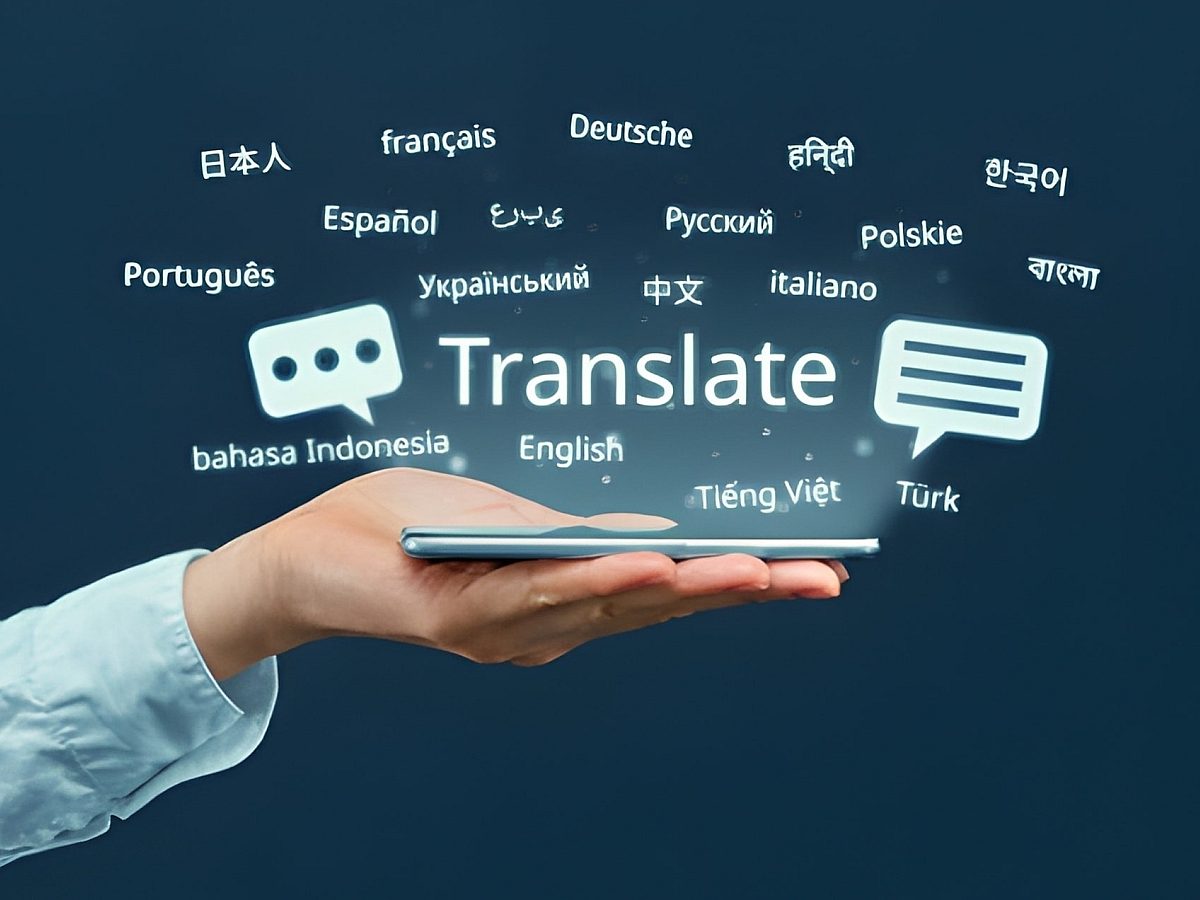AI technologies make training more accessible, inclusive and engaging for learners worldwide.
One of the most popular use cases of AI in e-learning is machine translation (MT), which has enabled businesses to expand the reach of their content at little cost. AI is also able to improve personalization, localization, and accessibility to reduce learners’ cognitive load and drive higher rates of success.
However, AI is in its earliest stages of implementation. Businesses must be careful not to overestimate AI’s abilities—or underestimate the necessity of human experts whenever AI is involved. This article explores the top use cases for AI in e-learning and provides tips on taking a measured approach to its implementation.
Machine Translation in E-Learning
Machine Translation (MT) enables educational institutions and businesses to break down language barriers, rapidly scaling their content for global audiences. By automatically translating text and multimedia content into multiple languages, MT allows learners from diverse linguistic backgrounds to access and engage with the material.
Thanks to advances in generative AI, MT can go beyond direct translation. It can now be used to automatically localize or personalize translations for specific audiences.
All of this can be done nearly instantly, making MT incredibly attractive to e-learning institutions aiming to cut costs and increase efficiency.
Despite the allure of MT, the accuracy and appropriateness of its translations can vary. While MT can handle basic translation and localization, raw AI translations often lack the nuances and cultural context necessary for effective communication. Without thorough human quality controls, AI content can put brands at risk. Expert linguists and professional localization agency must be present to monitor and refine AI-generated translations.
It’s also worth noting that MT is not appropriate for all e-learning subjects. In complex fields like life sciences, where precision and clarity are critical, human translation is recommended. A minor error in translation could lead to serious misunderstandings, putting employees and the organization at risk.
AI Voice Overs Bring Content to Life
AI voice overs are changing the way audio content is produced for e-learning.
AI generates high-quality voice overs quickly and cost-effectively. Businesses can preview AI vocal audio, make revisions after the fact, and enjoy much more flexibility overall.
Convenience and cost are not the only benefits. AI voice overs can also enhance accessibility and inclusion in e-learning.
AI can create audio content in multiple languages, making learning materials more accessible to non-native speakers and individuals with visual impairments. This ensures that all learners, regardless of their language or physical abilities, can benefit from the training.
For visual material, AI voiceovers can also be accompanied by on-screen AI “human” avatars. Avatars can be chosen to reflect audience demographics to improve trust and engagement.
AI voice overs can massively reduce production time and costs. But similar to MT, human involvement is necessary to ensure the quality and consistency of the final product.
AI pronunciation and cadence are not flawless, especially when your content includes complex terms. AI voice overs are also not recommended for content that aims to engage audiences emotionally.
Luckily, human post-editing can address pronunciation errors, awkward phrasing, or lack of emotional nuance that AI might miss.
Note that for audio description, however, a human-led approach is a must.

AI Captions & Subtitles Support Diverse Learners
Captions and subtitles are essential tools in e-learning. They improve comprehension and retention of information by providing a written representation of spoken content.
They also help learners who might struggle with auditory processing or who are learning in a non-native language.
The benefits of subtitles and captions go beyond aiding foreign and impaired viewers.
Today, captions and subtitles are growing in popularity among all viewers, making them essential for e-learning products—especially those that are viewable on mobile devices.
AI can create captions and subtitles more efficiently. Automatic speech recognition (ASR) and natural language processing (NLP) algorithms can generate transcriptions and translations that are highly accurate, reducing the time and effort required for manual captioning.
AI automated transcription boasts an accuracy rate of over 90%. However, this can’t compete with the average human accuracy rate of 99%. And, it’s not accurate enough to trust independent of human quality controls.
As with the other AI applications in this article, an expert in the loop is necessary to ensure the accuracy and quality of AI-generated captions and subtitles. Certified linguists must be involved to correct errors, ensure proper synchronization with audio, and adjust the text for readability and clarity.
Implementing AI Solutions for E-Learning
AI technologies are transforming e-learning by making content creation more efficient and accessible. For businesses and e-learning institutions, now is the time to begin implementing AI tools.
While AI isn’t without its faults, its benefits can’t be ignored. AI is now a part of e-learning, and it isn’t going away. Those who learn to leverage it early on will have a competitive advantage for years to come.
However, AI implementation poses new challenges to e-learning businesses.
Institutions with global aspirations must expand their reach quickly to stay competitive. AI is affordable and fast, so many businesses will use it to scale their products rapidly, overtaking those still using slower and outdated methods.
At the same time, scaling too quickly risks degrading the quality of e-learning products and worsening learner outcomes. It may also put businesses at risk of non-compliance or other legal trouble.
In sectors like life sciences, manufacturing and healthcare, the accuracy of training materials is critical to ensuring safety and compliance. In these sectors, businesses may be safer sticking with human experts. At the very least, humans must verify that content meets industry-specific standards and regulatory requirements.
Remember that regardless of the scale of your AI implementation, successful integration requires a careful balance of technology and human expertise.
Wolfestone Group: AI Solutions for E-Learning Success
At Wolfestone Group, we specialize in providing AI translation and localization services backed by meticulous human post-editing in 220+ language pairs.
Our services are designed to support the needs of e-learning businesses. We have the expertise to handle all of your AI needs, including:
- Machine Translation
- Content Creation
- AI Voice Overs
- AI Captions
- AI Data Solutions
- And much more.
Our quality control process involves robust human accuracy controls and compliance checks at every stage of content generation.
We understand the needs of e-learning businesses because we’ve been working with them for nearly two decades. By partnering with Wolfestone Group, your business can leverage the benefits of AI while maintaining the quality and integrity of its training materials.
Embrace the future of e-learning with Wolfestone Group.
Contact us today to learn more about our AI translation services and how we can help you create engaging and inclusive learning experiences for your global audience.
Alternatively, you can book a free AI consultation call.




